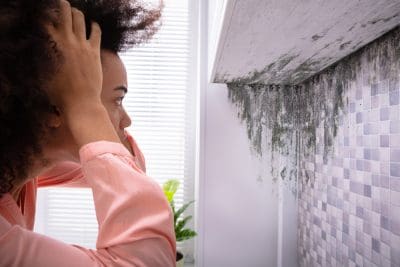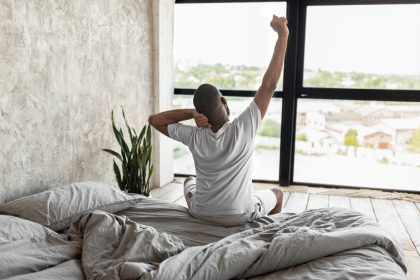Mold is more than a household nuisance—it’s a hidden danger that can affect your property, your belongings and most importantly, your family’s well-being. The moment you smell that damp, musty odor or see black spots along the walls, it’s often a sign that the problem is more than surface deep. Mold can spread quickly, silently invading areas you may not even think to check.
For homeowners, knowing how to keep this unwelcome invader at bay isn’t just helpful—it’s essential.
Why mold matters
Mold thrives in warm, damp environments. Leaky pipes, poor ventilation and high humidity are breeding grounds for spores. While mold may seem like a cosmetic issue at first, prolonged exposure can damage the structure of your home and aggravate respiratory conditions such as asthma or allergies.
When left unaddressed, it can lower property value and lead to costly repairs. Mold is not only unsightly—it becomes a silent destroyer.
Common hiding spots
Mold doesn’t always announce itself in visible patches on the wall. It hides in corners, under carpets, behind drywall and inside vents. Some of the most common hiding spots include:
- Bathrooms with poor ventilation
- Basements with limited sunlight
- Window sills with condensation
- Attics with roof leaks
- Kitchens under sinks or appliances
By the time you notice mold, the infestation may have already spread behind surfaces. This is why proactive prevention is more effective—and more affordable—than reactive cleanup.
Improving ventilation
Good airflow can mean the difference between a dry, safe home and a mold-prone environment. Moisture builds up quickly in closed spaces. Here’s how to improve air circulation:
- Install exhaust fans in bathrooms and kitchens
- Open windows regularly to let in fresh air
- Use ceiling fans in high-humidity areas
- Consider a whole-house ventilation system for constant airflow
Proper airflow allows surfaces to dry faster, making it harder for mold to settle in. It also helps eliminate stale odors and keeps the home feeling fresh.
Managing humidity levels
Humidity is a silent contributor to mold growth. When the moisture level in the air exceeds 60%, mold spores begin to multiply. Use these strategies to manage indoor humidity:
- Place dehumidifiers in basements or high-moisture rooms
- Use air conditioners during humid months
- Monitor indoor humidity with a digital hygrometer
- Avoid drying clothes indoors whenever possible
Being aware of your home’s humidity helps you strike the right balance between comfort and protection.
Preventing water leaks
Even a slow drip can create a massive mold problem over time. Water leaks from plumbing, roofs or foundations are major contributors to hidden moisture buildup. To stay ahead of the issue:
- Inspect pipes under sinks and behind toilets regularly
- Repair cracked seals around bathtubs and showers
- Clean gutters to prevent roof water intrusion
- Seal foundation cracks before they allow water in
Quick action saves thousands in future repairs and keeps dangerous spores from taking root.
Strategic cleaning practices
Routine cleaning helps prevent mold from finding a foothold. But it’s not just about wiping surfaces—it’s about cleaning with intent.
- Use mold-resistant cleaners in the bathroom and kitchen
- Don’t let wet towels, rugs or sponges sit for long
- Disinfect trash bins and sink drains frequently
- Wash shower curtains and bath mats weekly
Cleaning regularly with mold deterrence in mind keeps your home sanitary and safe from slow-growing threats.
Mold-resistant home materials
If you’re planning renovations or updates, use materials that reduce the risk of mold from the start. Small changes can lead to long-term benefits.
- Choose mold-resistant drywall or green board for bathrooms
- Use moisture-resistant paint with antimicrobial properties
- Install tile or waterproof flooring in damp areas
- Consider metal studs instead of wood in basements
These upgrades create a more resilient home, especially in regions prone to high humidity or flooding.
Early intervention strategies
Even with precautions, mold can still make an appearance. If you notice discoloration, water stains or a musty smell, act immediately:
- Scrub the area with a solution of vinegar or hydrogen peroxide
- Dry the space thoroughly after cleaning
- If the area is larger than 10 square feet, consult a professional
- Never paint over mold—it will continue to grow underneath
Tackling mold early helps avoid its return and keeps it from spreading to other parts of the home.
When professional help is needed
Sometimes the situation goes beyond DIY. Mold that spreads through insulation, HVAC systems or structural wood needs expert removal. Professionals use HEPA filters, negative air pressure and specialized tools to safely eliminate the problem.
If household members experience respiratory issues that worsen at home, or if mold keeps coming back after cleaning, it’s time to call in help.
A certified mold remediation team can assess the cause, eliminate hidden colonies and advise on how to prevent recurrence.
Daily habits for prevention
Mold prevention isn’t a one-time task. It’s about creating consistent habits that maintain a dry, well-ventilated environment. Some small daily efforts go a long way:
- Wipe down wet countertops and bathroom surfaces
- Use the vent fan every time you shower or cook
- Keep indoor plants well-drained and clean
- Regularly empty and clean dehumidifiers
- Avoid clutter in corners and under furniture where air can’t circulate
These practices become part of a homeowner’s routine and help protect your investment and health year-round.
A proactive approach
A mold-free home is a safe home. Beyond aesthetics, it preserves air quality, reduces allergy triggers and prevents hidden structural damage. As a homeowner, taking charge of mold prevention is an act of care—one that offers peace of mind and physical protection.
It’s not about fear—it’s about empowerment. Knowing what to look for and how to respond helps you stay one step ahead of an invisible threat. And when you catch it early, you save yourself from stress, cost and potential harm.
By improving ventilation, managing humidity, fixing leaks and cleaning with intention, you build a safer, healthier living environment for everyone under your roof. When mold prevention becomes a priority, your home becomes a true haven—clean, comfortable and protected from the inside out.
This story was created using AI technology.















